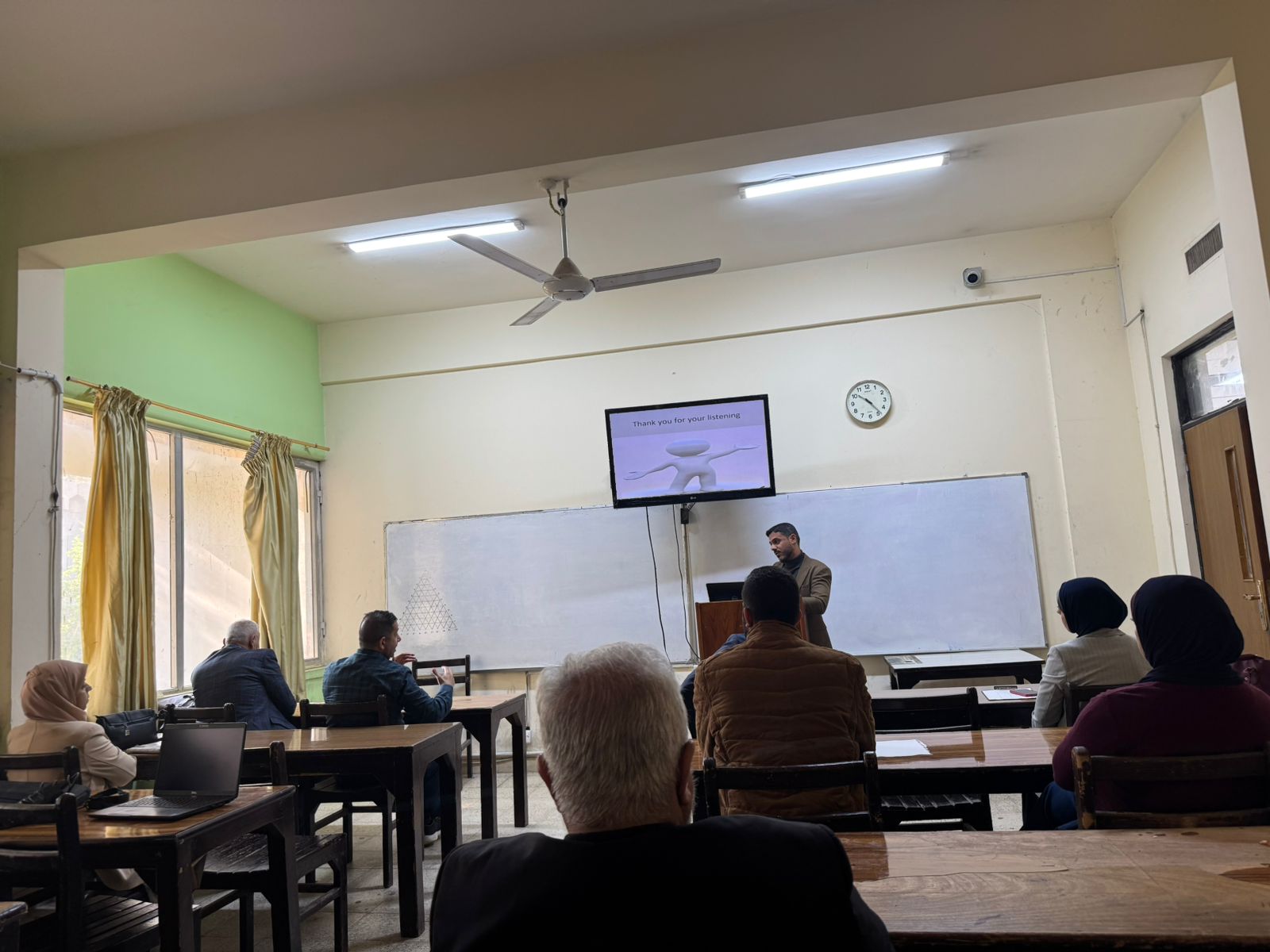Visitors: 28536894 Views
Done By: Chemical Engineering Department
Post Date: 2024-11-14
Last Browse: 2025-09-14

The Department of Chemical Engineering held a
discussion session on Thursday, November 14, 2024, to discuss the research of
graduate / master's students, attended by the department head, and a selection
of the department's professors to review the latest progress on the projects.
The discussion was valuable between the faculty and students, aimed at helping
to overcome the challenges they face in their research. The research topics
varied, focusing on vital issues in our current era, such as renewable energy,
as well as problems related to carbon dioxide emissions and the separation of
associated water from crude oil. For example, the student Hawra Salem Abdullah
presented an introduction to her research titled. ‘’Merging microbial fuel cell and
photobioreactor for the dual purpose of wastewater treatment and bioenergy
generation’’. Which is studying microbial fuel cells (MFCs) and
photobioreactors. Microbial Fuel Cells (MFCs) are biological technologies that
convert organic matter in wastewater into electrical energy. Rely on bacteria
to break down organic matter and produce electrons that are collected to
generate electric current. Used for wastewater treatment and energy generation
simultaneously. And Photobioreactors are biological systems that use algae or
other microorganisms to produce energy. Rely on photosynthesis to convert light
energy into chemical energy in the form of sugars. Used for biofuel production,
carbon dioxide fixation, and oxygen production. The goal is to integrate
microbial fuel cells and photobioreactors into a single system to achieve
multiple objectives, such as wastewater treatment, electrical energy, and
biofuel production. Carbon dioxide fixations, and Biomass production (algae). On the other hand the
student Fatimah investigates the application of direct current
electric fields to enhance the separation of water from crude oil emulsions.
Three distinct electrode configurations were employed to examine the influence
of various parameters, including applied voltage, electrode material, electrode
geometry, inter-electrode distance, temperature, and treatment duration. The
results indicate that these factors significantly impact the efficiency of the
electrical separation process. Furthermore, the study incorporated two crude
oil samples from different sources, allowing for the analysis of their
respective properties, such as droplet size distribution, coalescence kinetics,
and continuous phase viscosity(crude oil).